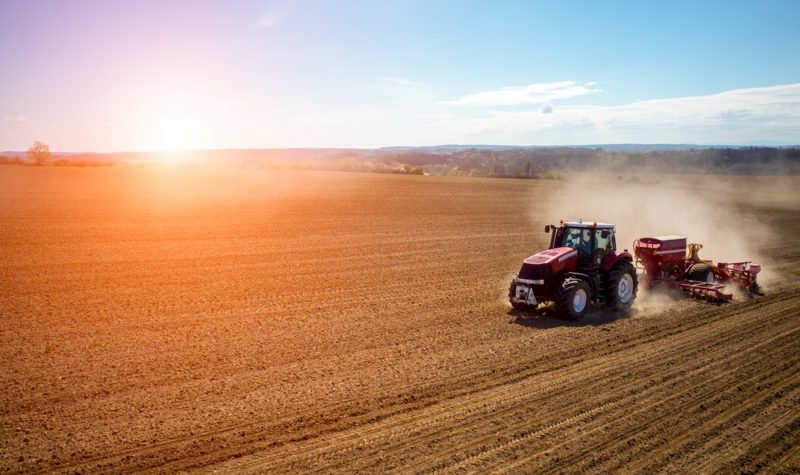Agribusiness will be the ultra-cool of the 2020s

Farming and food production, long-since a Cinderella business, has just become a cool investment space. This month we look at how to make decent returns from feeding the world.
How a world of 9.6 billion people in 2050 is going to feed itself in an environmentally sustainable and humane way is one of the greatest challenges before us. Food security is about to become a major concern in the UK and elsewhere.
I’m talking about the ability to keep a nation of more than 70 million people adequately provisioned in a post-globalisation world of shifting economic allegiances, impediments to free trade and accelerating climate change.
And yet, I’m sensing opportunities. With climate change, in northern latitudes the growing season is getting longer and the variety of crops that can be grown is widening.
It’s time to lift the veil and explore the exciting world of food production. It can only get more important from hereon in.
In fact, economists have been obsessing about food since the dismal science of economics first emerged in the Enlightenment of the 17th century, and even before….
To read the rest of this article, click HERE to read Master Investor Magazine.
An impressively scoped article which concludes correctly that ‘we are all Malthusians now’ and also identifies that Ag yields have risen over many decades through the application of new technologies.
There are some errors in the article which are important for the record and important for the conclusion;
firstly for the record;
the historic yield increases for major crops has indeed begun to tail off of late which is worrying. The main agent of yield increases in recent history has been the adoption of Crop Protection products which are not mentioned at all in the article. Instead there is mention of GPS and other ‘smart’ cultivation aids entering Ag. These make farmers lives easier but do not in all cases contribute to yield increases. Similarly the GMO story is emphasized in the article. GMO traits are largely valuable because they substitute for Crop Protection products by conferring beneficial charateristics in crops by genetic means and is therefore they are also not adding much to the yield increase drive. Also the author repeats the old canard that Monsanto are selling ‘use once’ seed that is sterile if replanted from the harvested crop. This is not true, the ‘use once’ behaviour is controlled by grower contracts and here is the rub, contracts with growers are only possible in patent regarding countries such as the Americas; Monsanto’s technology has been systematically pirated in the developing world and they have derived little commercial benefit from it.
secondly assertions made that affect the articles conclusion;
there is a statement that with past yield increases we are approaching the limits of what crops can grow. This is not the case the genetic potential of modern crop seed varieties is a multiple of achieved yield. For instance US corn yields on average 150 bushels per acre . Expert growers like Randy Dowdy the winner of last year’s National Corn Growers Yield Contest harvested 522 bushels per acre. Similar statistics for all major world crops are available. We are less than 25% along the path to maximum yield. The article, having concluded that we are up against limits to growth remarks on new lands available including the comment that Africa holds the promise of 60% of global Ag land in the future. This is an unlikely development. African logistics and risk will deter wholesale massive investment which is needed to move the needle on its current under par contribution to global food security.
What is needed is for a continuation of yield enhancements in commercial farms already established. It is here that 80% of the solution lies and only 20% from increased arable land or irrigation extension (FAO).
It is less than satisfactory that the preponderance of R&D $$s in Ag committed by the big 6 companies (soon to be 4?) are directed not to giving Randy Dowler and his kind more options to squeeze additional bushels of corn from his land, but to finding farmer convenience and cost saving technologies (Precision Ag, GMOs) or for finding substituting technologies that favour one company over another (competitive Crop Protection innovation) or improving seed varieties further to generate ‘theoretical maximum’ yields that are already far ahead of what ordinary farmers can achieve.
If we are ‘all Malthusians now’ then the smart money should follow the start up companies that are seeking new sources of yield enhancement that give crops a boost. There are a number of these, some working on symbiotic soil microbes (Agrinos, Indigo, Bio-Consortia) others such as the company that I chair who are taking a fresh science based approach to new forms of chemistry that confer plant resistance to stress in the field leading to measurable yield enhancement (Plant Impact). Check out these new companies and support them and we will reconsign Malthus back to a Cassandra, who was right but not yet!